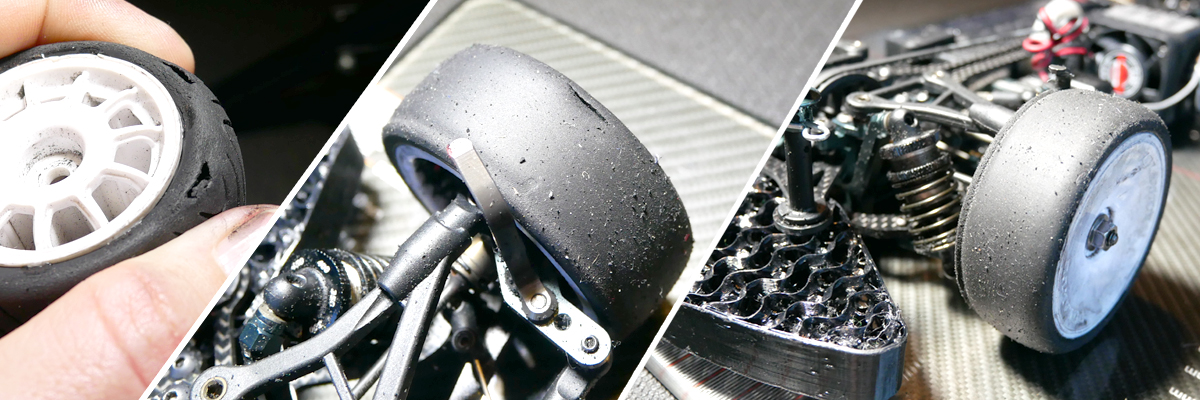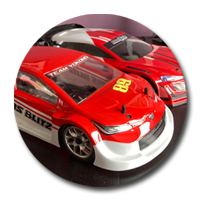In the world of RC car racing, tyres play a pivotal role in determining performance and success. Regardless of whether you are racing on-road or off-road, the condition and preparation of your tyres can make a significant difference. Properly prepared tyres not only enhance grip and handling but also contribute to the longevity and consistency of your vehicle's performance.
There are big advantages to be gained from dedicating time and effort to tyre preparation. A well-prepared set of tyres can provide better traction, more responsive handling, and an overall competitive edge against other racers. Understanding and implementing the right preparation techniques can be the key to unlocking your RC car's full potential on the track.
In this article, we will delve into the essential steps for preparing RC car tyres before a race. We will cover crucial aspects such as:
- Checking the Tyres: Ensuring that your tyres are in optimal condition by inspecting for wear and damage.
- Cleaning the Tyres: Removing dirt, debris, and residue to maintain maximum contact and grip with the racing surface.
- Applying Additives: Using tyre additives to enhance grip and performance, tailored to the specific track conditions you will be racing on.
By following these steps, you can ensure that your RC car tyres are race-ready, giving you the best possible chance to achieve top performance and success in your racing endeavours.
Checking Your RC Race Tyres

Before every run or race, it’s essential to develop a habit of checking your tyres to ensure optimal performance. Here's how best to inspect your tyres:
- Inspect for Glue Failure: Use your fingers to push against the sidewalls of the tyres. This will help you identify any areas where the glue has failed. Glue failure can lead to tyre separation during a race, severely affecting your control and speed.
- Check for Damage: Examine both the wheels and tyres for any signs of damage. Cracks in the wheels can cause significant flex, leading to unpredictable grip levels. Foam tyres are particularly prone to losing pieces of the tyre, but rubber tyres can also suffer from cuts and tears. Any damage can compromise the tyre's integrity and performance.
- Assess Tyre Wear: Monitoring tyre wear is crucial. While wear is inevitable over time, noticing it early can prevent failures mid-race, which could result in a DNF (Did Not Finish). Regularly checking for excessive wear allows you to replace tyres before they become a liability.
By incorporating these checks into your pre-race routine, you can maintain the reliability and performance of your RC race tyres, ensuring a smoother and more competitive racing experience.
Cleaning Your RC Race Tyres

Another good habit to adopt is cleaning your tyres before every run or race. This practice ensures that your tyres are always in the same condition at the start of each session, maintaining consistency which is crucial in RC racing. Even if your setup is perfect, the grip level can change throughout a meeting. By keeping your tyres clean and consistent, you can better manage these variations.
Cleaning Methods
Motor Brake Disc Cleaner: One effective solution for cleaning tyres is using motor brake disc cleaner. Here's how to do it:
- Spray the cleaner onto a paper towel.
- Rub the towel onto the tyre, ensuring to cover the entire surface.
- The cleaner removes any oils and dirt from the tyre and dries quickly, making it ready for a new application of tyre additive.
Tyre Additive: Another method is to use tyre additive for cleaning:
- Apply the additive to a paper towel.
- Wipe the tyre clean with the towel.
- This method is particularly beneficial when racing on low grip tracks, as the additive can help maintain a more consistent level of grip.
By consistently cleaning your tyres, you ensure they are free from contaminants that can affect performance, leading to more predictable and controllable racing conditions.
Applying Additive to Your RC Race Tyres

Applying tyre additive before a run or race is an excellent way to maximize grip levels. The additive softens the tyre, enhancing its ability to grip the track surface. Here’s how to effectively use tyre additive to optimise your RC car’s performance:
Application Timing and Technique
Timing:
- Apply the additive between 10 and 20 minutes before your session begins. This allows the additive to fully penetrate and soften the tyres.
- For new tyres or low grip tracks, consider applying the additive twice, with 5-10 minute intervals between applications. This can further enhance the grip level.
Adjusting Grip Levels:
- You can fine-tune the grip by adjusting the timing of the additive application. To balance grip between the front and rear tyres, apply the additive to the rear tyres a few minutes before the front. This technique helps if you need more rear grip compared to the front.
Selective Application:
- To manage grip levels more precisely, you can control how much of the tyre is treated with the additive. For instance, if you need less grip on the front tyres, only apply the additive to the inside half of the tyre.
By mastering the application of tyre additive, you can significantly improve your RC car’s handling and performance, giving you a competitive edge in every race.
Using Tyre Warmers for RC Race Tyres

A final aspect of tyre preparation to consider is the use of tyre warmers. These devices are particularly beneficial for outdoor meetings, especially when track temperatures are not ideal.
Benefits of Tyre Warmers
Enhanced Initial Grip:
Heating the tyres before a session means they will start with a higher level of grip. This reduces the time needed for track friction to bring the tyres up to optimal temperature, giving you an immediate advantage at the start of the race.
Performance on Cold Tracks:
For cold tracks, it's usually best to heat the tyres as much as possible before the session. This ensures that the tyres can provide the necessary grip right from the beginning, minimizing the risk of sliding or losing control.
Adjustable Temperatures:
As the track warms up during the day, you can adjust the temperature of the tyre warmers accordingly. This flexibility allows you to maintain consistent grip levels throughout the session, adapting to changing track conditions for optimal performance.
By incorporating tyre warmers into your preparation routine, you can ensure that your tyres are always at their best, providing the grip you need to stay competitive in any conditions.
|



 ClubHub Steve
ClubHub Steve